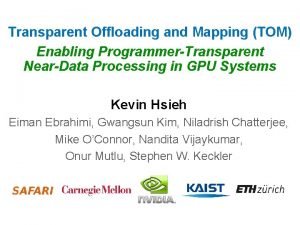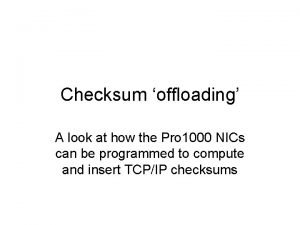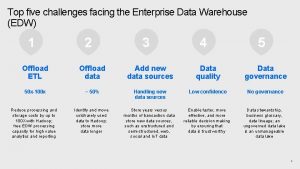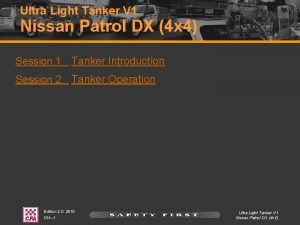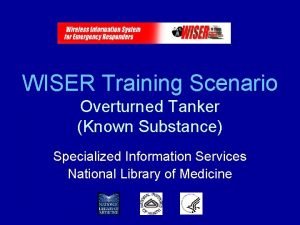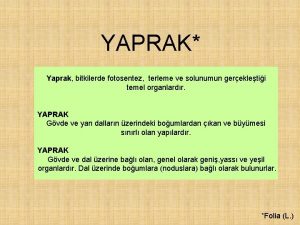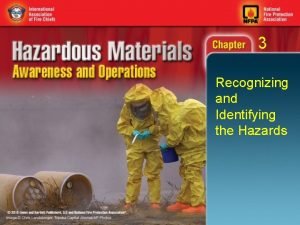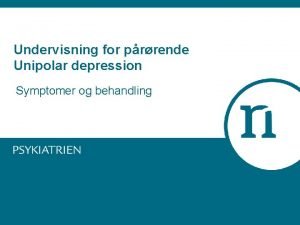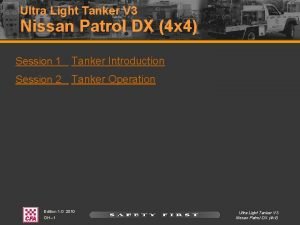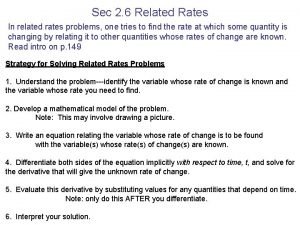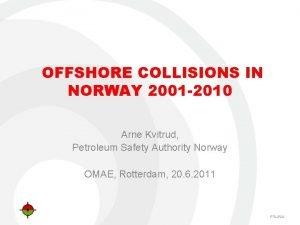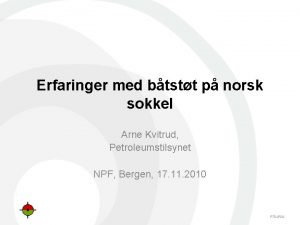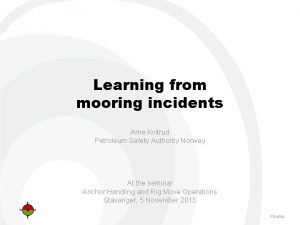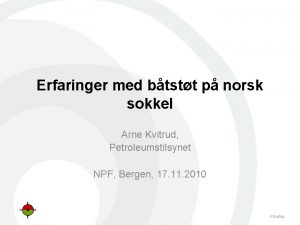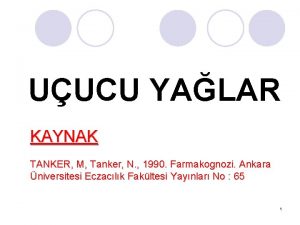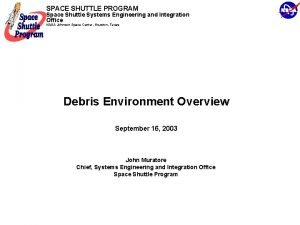Shuttle tanker collisions during offloading Arne Kvitrud Harald









- Slides: 9

Shuttle tanker collisions during offloading Arne Kvitrud, Harald Kleppestø and Odd Rune Skilbrei, Petroleum Safety Authority (PSA), Stavanger, Norway. PTIL/PSA

Shuttle tanker collisions during offloading Cases 2000 -2011: • 2 x Collisions • 4 x Near collisions • 7 x Position related incidents Why didn’t all the cases end in a collision? Which improvements are necessary? PTIL/PSA

The Knock Sallie collision with Norne FPSO in 2000 150. 000 dwt 0. 6 m/s 31 MJ collision energy PTIL/PSA

Knock Sallie collision - causes Software • Logic or programming errors in the DP-software. • Erroneous calculation of the “current” in the DP-software. • Quality of testing. • Required alarms not given. Qualifications • The manning on the bridge was not according to procedure. • Training of personnel not performed according to procedures. • Lack of knowledge of the DP-system. • Unnecessary to perform “position drop out” tests on location. PTIL/PSA

The Navion Hispania collision with Njord B FSU in 2006 126. 000 dwt 1. 2 m/s 61 MJ collision PTIL/PSA

Navion Hispania collision - causes Software • Errors in the control systems (software) for propellers. • During the blackout there was a cacophony of alarms on the bridge. Technical • Incorrect signal wiring. Qualifications • Inadequate knowledge of the Dynamic Positioning system. • “Autopos” mode maintained even after severe thruster failures. • Inadequate training in the DP failure modes. • Lack of compliance with procedures and errors in procedures. PTIL/PSA

Causes of incidents • Collisions: lack of knowledge or training and software errors occured in both cases. • Near collisions: software errors and lack of knowledge or training, together with not following procedures are found to be the causes for a majority of the cases. • Position incidents: equipment errors are dominating and are a part of the incident in six out of seven cases. Software errors and lack of maintenance is found for two of the cases. PTIL/PSA

Conclusion = new questions! • Q 1 Software • Q 2 Organization • Q 3 Distanse PTIL/PSA

The end! PTIL/PSA
